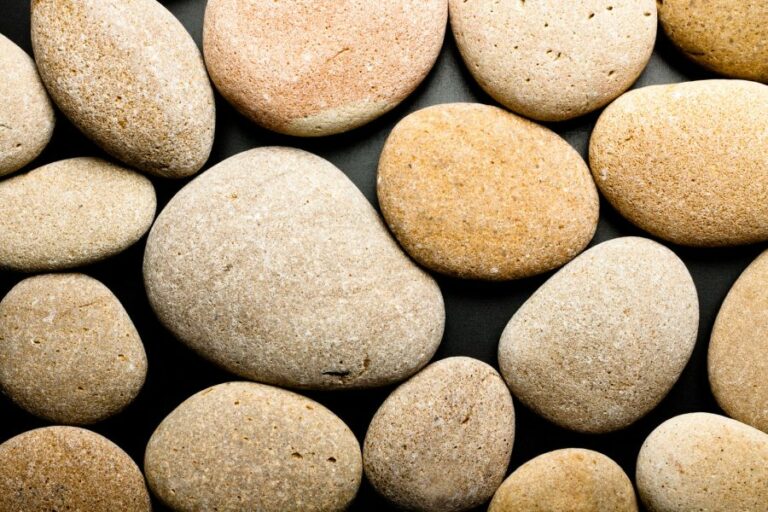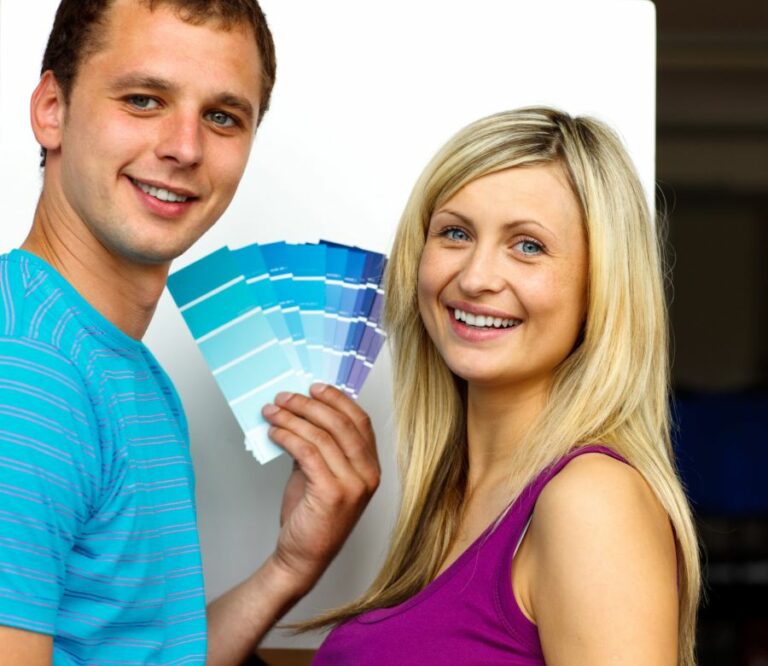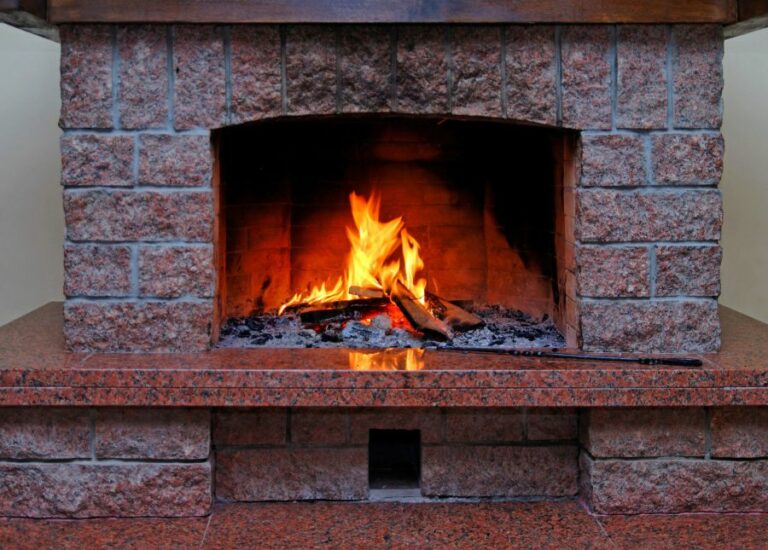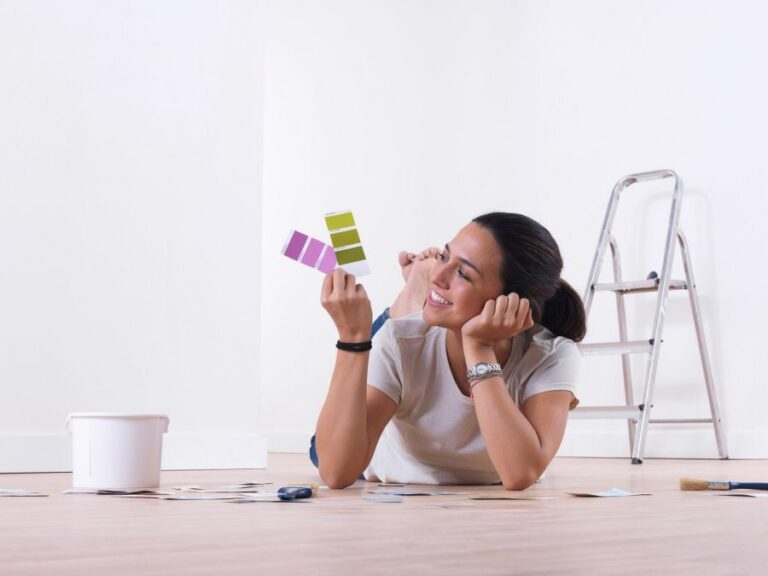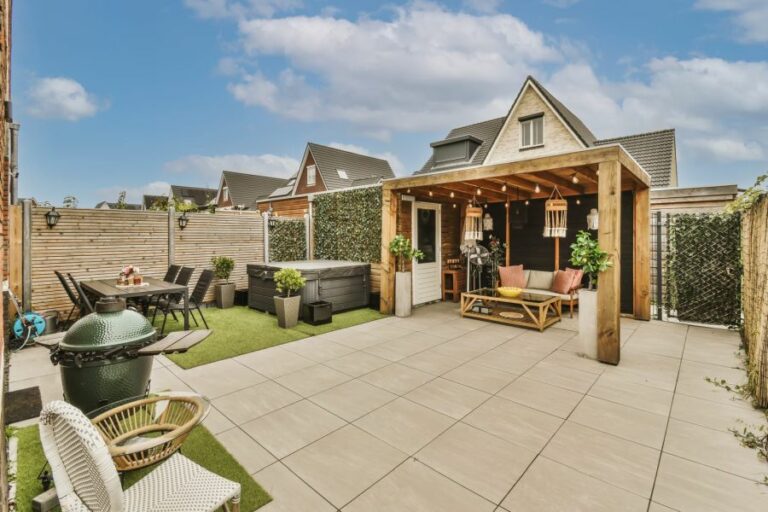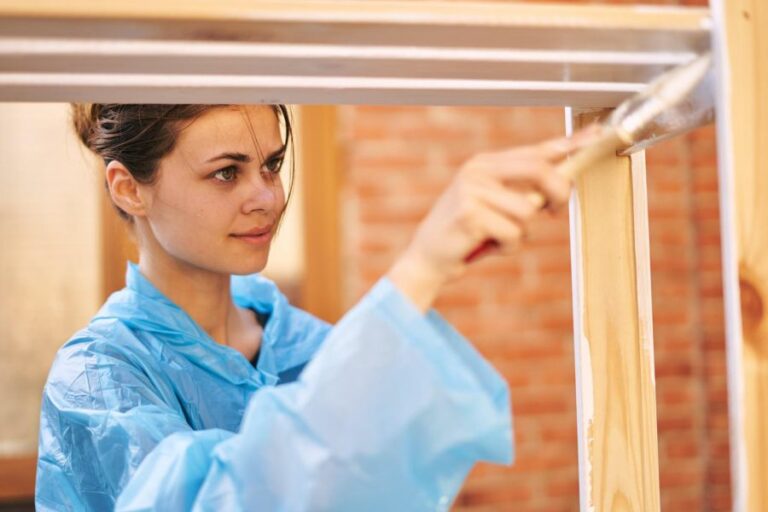Paint For Outdoor Basketball Court, 25 Things You Should KnowPaint For Outdoor Basketball Court
Are you looking to upgrade your outdoor basketball court or construct a new space for those fierce games? I have you covered! Discover everything from budget-friendly options to professional-grade paint while exploring application techniques to ensure a long-lasting smooth finish.
Paint for outdoor basketball court:
Selecting the right paint for outdoor basketball courts is crucial for durability, safety, and visual appeal. Acrylic paint is the most common and recommended option for its durability and weather resistance, while rubberized paint offers enhanced traction and shock absorption. Proper application and maintenance are essential to ensure the court’s safety, longevity, and resistance to weather elements.

Discover the perfect paint for your outdoor basketball court with our comprehensive guide. Learn about various paint types, their benefits, and how to apply them. Ensure a long-lasting, vibrant, and safe playing surface for athletes and enthusiasts alike. Read on to transform your court.
Contents
- 1 High-Quality Paint for Outdoor Basketball Court Surfaces
- 2 What Type of Paint is Suitable for an Outdoor Basketball Court?
- 3 What is the process for painting a backyard basketball court professionally?
- 4 What are the Most Suitable Materials for Constructing an Outdoor Basketball Court?
- 5 Should I Consider Painting My Concrete Basketball Court?
High-Quality Paint for Outdoor Basketball Court Surfaces
Outdoor basketball courts are essential for budding athletes and sports enthusiasts in both urban and suburban communities.
While numerous court materials are available, concrete is the most common surface material for outdoor courts. One of the main problems concrete court owners face is wear and tear due to weathering and regular use.
This is where the appropriate paint for outdoor basketball courts comes in handy, as it protects the court and enhances its appearance.
• Importance of Paint for Outdoor Basketball Courts
Good quality paint for outdoor basketball courts provides several benefits:
- Protection: The paint acts as a protective barrier against weather elements such as rain, snow, and sunlight, which can cause cracks and fading on the court surface.
- Safety: A well-painted court is less slippery, ensuring better traction and preventing accidents during gameplay.
- Visual Appeal: A bright and smooth court stands out in any environment and entices players to use the facility.
- Durability: The correct paint can extend the lifespan of the court surface, reducing the need for regular resurfacing and repair work.
• Types of Paint for Outdoor Basketball Courts
Several types of paint are suitable for basketball court surfaces, each offering unique benefits and drawbacks. Some of the most popular options include:
– Acrylic Paint
Acrylic paint is the most common type of paint used for outdoor basketball courts. It is a water-based paint that is easy to apply and fast-drying. Acrylic paint is known for its durability, fade resistance, and ability to resist mildew and algae growth.
It is available in a variety of colors and can be mixed with sand or a textured product to provide additional traction on the court.
– Rubberized Paint
Rubberized paint is a unique blend of water-based paint and rubber particles, giving the court surface slightly bumpy. This texture provides players with better grip and traction and helps with shock absorption, reducing the impact on the players’ joints.
Rubberized paint is UV-resistant and weather-resistant, making it a suitable option for outdoor courts.
– Polyurethane Paint
Polyurethane paint is a high-performance paint that is known for its excellent durability and resistance against extreme weather conditions. It provides a smooth and glossy finish on the court surface, enhancing its visual appeal.
However, due to its slippery texture, it is not recommended for competitive play unless used with additives that can improve traction.
• Choosing the Right Paint for Your Outdoor Basketball Court
When selecting the best paint for an outdoor basketball court, consider the following factors:
- Durability and Weather Resistance: The paint should be able to withstand harsh weather conditions and extensive use without deteriorating rapidly.
- Traction: The court surface should offer sufficient grip for players to avoid slipping during gameplay.
- Ease of Application: The paint should be easy to apply and adhere well to the court surface.
- Maintenance: Consider the ease of maintaining and cleaning the court surface after it has been painted.
- Cost: Evaluate the overall cost of the paint, including the price per gallon and the number of coats needed to cover the court thoroughly.
Considering these factors, acrylic paint is generally recommended for most outdoor basketball courts due to its durability, fade resistance, and ease of application. Rubberized paint can also be a suitable option, especially if you are looking for enhanced traction and shock absorption.
• Application Process for Painting an Outdoor Basketball Court
Before applying paint to an outdoor basketball court, ensure that the surface is clean and free from debris, grease, and oil. The best time to paint is during dry, warm weather, with temperatures ranging between 50°F and 90°F.
The application process usually follows these steps:
- Prepare the Surface: Repair any cracks or holes in the court surface and ensure it is smooth and level.
- Prime the Surface: Apply a high-quality primer to the court surface, following the manufacturer’s instructions. Allow it to dry completely.
- Apply the Paint: Use a paint roller or spray equipment to apply the first coat of paint evenly across the court surface, allowing it to dry completely before applying additional coats as needed.
- Apply Line Markings: Add line markings using masking tape and a suitable contrasting paint if needed.
- Seal the Surface: Apply a clear sealer to protect the paint’s finish and enhance its durability.
• Maintaining a Painted Outdoor Basketball Court
Proper maintenance is crucial to ensure that a painted outdoor basketball court is both safe for gameplay and has an extended lifespan. Follow these guidelines to maintain the court:
- Regularly Clean the Court: Sweep the court surface frequently using a soft-bristled broom for general debris such as dirt, leaves, and trash.
- Wash the Court: Periodically wash the court using a pressure washer on a low setting, ensuring you do not damage or strip the paint off the court surface.
- Inspect the Court Surface: Regularly inspect the court for any signs of wear and tear, such as cracks, chips, or fading paint.
- Repaint the Court When Needed: If the court shows significant wear and tear or the paint is fading, it may be time to repaint the surface.
By following these guidelines and using the right choice of paint for your outdoor basketball court, you can create a safe, enjoyable, and visually appealing space that resists weather-related issues and stands the test of time.
What Type of Paint is Suitable for an Outdoor Basketball Court?
A well-maintained outdoor basketball court not only enhances the performance of players but also increases the durability of the court’s surface.
• Understanding the Importance of the Correct Paint
Before we dive into the types of paint suitable for an outdoor basketball court, it’s essential to understand why choosing the right paint matters. The quality of the paint used impacts the following factors:
- Durability: The right paint will last longer and withstand various weather conditions, reducing the frequency of repainting and maintenance.
- Safety: Paints explicitly designed for sports courts provide better traction and grip, reducing the chances of accidents and injuries.
- Performance: Proper paint selection improves ball bounce, speed, and overall gameplay experience.
With these factors in mind, let’s explore the various paints suitable for outdoor basketball courts.
• Acrylic Paints: A Popular Choice for Outdoor Courts
Acrylic paints are widely used for outdoor basketball courts due to their several advantages, including:
- UV resistance: Acrylic paints are highly resistant to UV rays, ensuring that the court’s colors remain vibrant and do not fade quickly.
- Durability: These paints can withstand harsh weather conditions, making them perfect for outdoor courts that are exposed to the elements.
- Quick-drying: Acrylic paints dry relatively quickly, allowing you to paint the court and make it usable quickly.
Based on my experience, I recommend using high-quality, 100% acrylic paint specifically designed for outdoor sports surfaces. These paints have the proper viscosity, adhesion, and traction balance required for a great basketball experience.
• Textured Paints: Enhanced Traction and Grip
Textured paints can be an excellent choice for outdoor basketball courts, especially if you want to improve traction and grip for players. These paints have built-in aggregates that create a rough, textured surface, increasing friction between the court and the players’ shoes.
While textured paints can be slightly more challenging to apply compared to acrylic paints, the benefits are worth the extra effort. Some textured paint options include:
- Pre-mixed acrylic textured paints: These paints come with added aggregates, saving you the inconvenience of mixing them yourself. Be sure to choose a product specifically designed for outdoor sports surfaces.
- Adding aggregates to acrylic paint: If you prefer a more customized approach, you can manually mix fine sand or other aggregates into regular acrylic paint. This method allows you to control the level of texture and grip on the court.
• Paints with Cushioning Systems
If you want to provide players with additional comfort and shock absorption, consider selecting paint with a built-in cushioning system. These paints consist of a multi-layered system with rubber granules, providing a softer and more comfortable playing surface.
Cushioned paints can help reduce strain on players’ joints, making them an excellent option for recreational courts or areas where senior players frequent. However, it’s essential to note that these paints may require more maintenance and can be more expensive than standard acrylic paints.
• Additional Tips for a Successful Outdoor Basketball Court Painting Project
Now that we have covered the different types of paint available for outdoor basketball courts, here are some additional recommendations to ensure a successful painting project:
- Make sure the court surface is clean and dry before applying the paint. Remove any debris, dust, or loose materials that could interfere with the paint’s adhesion.
- Apply a primer before painting the court. A primer will improve the paint’s adhesion and enhance the overall durability of the surface.
- Use the recommended paint thickness for each type of paint. Incorrect application can negatively impact the court’s performance and durability.
- Allow sufficient drying time between each layer of paint or primer. Rushing the drying process can cause peeling, cracking, or blistering in the long run.
- Use durable and UV-resistant line paint for marking the court lines. This ensures that the lines remain visible and vibrant even after extended use and exposure to sunlight.
In conclusion, selecting the right paint for your outdoor basketball court can significantly impact its durability, safety, and performance. Acrylic paints, textured paints, and paints with cushioning systems are all excellent options, depending on your specific needs and budget.
By following the tips provided in this article, you can create a high-quality outdoor basketball court that will provide a fantastic experience for players of all skill levels.
Type of Paint | Description |
|---|---|
Acrylic | Water-based acrylic paint is the most common choice for outdoor basketball courts, as it is UV resistant, durable, and resistant to various weather conditions. |
Textured Acrylic | Textured acrylic paint offers additional grip and traction to prevent slipping, thus improving player safety and performance. |
Aliphatic Polyurethane | Aliphatic polyurethane is a more expensive option, but it provides exceptional durability, UV resistance and suitable for harsh weather conditions. |
Epoxy | Epoxy offers extreme durability and bonding strength, however, it may not be ideal for outdoor use due to its sensitivity to UV rays and tendency to yellow over time. |
What is the process for painting a backyard basketball court professionally?
Painting a backyard basketball court can be a rewarding and fun project. With a little bit of time and effort, you can create a professional-looking, durable, and functional basketball court that will last for years to come.
• Preparing the Surface
Before you start painting, it’s important to ensure that the surface of your basketball court is clean, level, and free of debris. This will ensure proper adhesion of the paint and a smooth, long-lasting finish.
1. Clear the Area
Remove any grass, plants, rocks, or other debris from the area where the court will be located. If possible, use a lawn edger or other landscaping tool to clearly define your court’s border.
2. Level the Surface
Ensure that the entire surface of the court is as level as possible. This may require the use of a leveling tool, such as a builder’s level, and potentially some additional topsoil or fill material. A level court will not only improve the quality of your paint job, but it will also improve the playability of the basketball court.
3. Clean the Surface
Sweep and wash the surface with a broom and a hose. Use mild soap and water for any stubborn dirt or stains. Allow the surface to dry completely before moving on to the next step.
• Choosing the Right Type of Paint
A few different types of paint can be used for painting a basketball court. When choosing paint, consider factors such as durability, weather resistance, and grip or skid resistance.
I recommend using high-quality acrylic or latex-based sport court paint, as these offer excellent durability, weather resistance, and grip.
1. Acrylic Sports Court Paint
Acrylic sport court paint is a water-based paint specifically formulated for use on sports surfaces, such as basketball courts. This type of paint is highly durable and resistant to weather, UV, and mildew. Additionally, it provides excellent grip and skid resistance, making it an ideal choice for basketball courts.
2. Latex-Based Paint
Latex-based paint is a versatile option that can also be used for basketball courts. When selecting a latex-based paint, look for one specifically designed for outdoor use with added durability and weather resistance.
• Painting the Court
Now that you’ve prepared the surface and selected the right paint, it’s time to start painting!
1. Apply a Primer Coat (optional)
In some cases, applying a primer coat before painting the court can improve the adhesion and longevity of the paint. This is particularly true if your court surface is made of concrete. If you apply a primer coat, use a high-quality primer compatible with your chosen paint.
2. Choose your Colors and Mark your Lines
Decide on the color scheme for your court and purchase the appropriate paint. Additionally, you’ll need to mark out the lines for the key, free-throw line, and three-point line. Use a tape measure and chalk to mark these lines accurately.
3. Paint the Surface
Begin by painting the main surface of the court, making sure to use smooth, even strokes with a roller or large paintbrush. It’s best to work from one corner of the court to the opposite corner for an even finish.
Apply multiple thin coats, allowing each coat to dry completely before applying the next. This will result in a more durable and professional-looking finish.
4. Paint the Lines and Markings
Using a smaller paintbrush or a paint roller with a guide, carefully paint the lines and markings on the court. Take your time and use painter’s tape to ensure clean, crisp lines. Remove the tape promptly after painting the lines to avoid any paint bleeding or peeling.
– 5. Apply a Clear Sealant (optional)
To further protect your freshly painted court and extend its lifespan, you may wish to apply a clear sealant. This step is optional, but it can be beneficial in terms of long-term durability.
• Maintenance and Care
Once your court has been painted and sealed, regular maintenance will keep it looking great and playing well for years. This includes sweeping the court regularly, keeping it free from debris and leaves, and washing it periodically with water and mild soap.
In conclusion, painting a backyard basketball court is a relatively simple and straightforward project that can provide major benefits to your home and your game.
By following these key steps and using high-quality materials, you’ll create a long-lasting, professional-looking court that you, your family, and your friends will be able to enjoy for many years.
Step | Description |
|---|---|
1 | Choose the area for the basketball court and measure its dimensions, taking regulations and available space into consideration. |
2 | Clear the area of debris, rocks, and other items, and ensure the ground is level before starting the painting process. |
3 | Install a suitable hard surface, such as concrete or asphalt, to serve as the foundation for the court. |
4 | Clean the surface of the court using a power washer and a mild detergent to remove dirt or any other contaminants. Allow it to dry completely before proceeding. |
5 | Apply an acrylic resurfacer or primer coat over the entire surface to create a consistent texture and ensure the paint adheres properly. Allow this layer to dry according to the manufacturer’s instructions. |
6 | Select a high-quality, durable outdoor paint specifically designed for basketball courts. Choose colors for the background and lines of the court. |
7 | Using a paint roller, apply the background color to the entire court’s surface, and allow it to dry according to the manufacturer’s instructions. |
8 | Use masking tape or a stencil to lay out the lines of the basketball court, following the appropriate dimensions and regulations. |
9 | Paint the lines with the chosen contrast color using a brush or paint sprayer, being careful not to smudge the lines or paint over the masking tape. |
10 | Remove the masking tape or stencils once the paint is dry, and inspect the lines to ensure they are clean and precise. Touch up any mistakes as needed. |
11 | Install the basketball hoop, backboard, and any additional accessories to complete the court. |
What are the Most Suitable Materials for Constructing an Outdoor Basketball Court?
Outdoor basketball courts provide a perfect space to engage in physical activity and enjoy the game with friends and family. The quality and performance of the court significantly impact one’s playing experience, making it essential to choose the right materials.
– Concrete for Durability and Cost-Effectiveness
Concrete is a highly durable and cost-effective choice for an outdoor basketball court surface. It has the strength to withstand heavy use and harsh weather conditions, making it ideal for public parks and recreational facilities. Here’s why concrete is recommended for outdoor courts:
- Durability: Concrete courts can last for decades with proper care and maintenance, making it a long-lasting option for those looking to invest in a sturdy court.
- Cost-effective: Concrete is a relatively affordable material to install and maintain, providing great value for money in the long run.
- Versatility: Concrete can be customized with various finishes, colors, and textures to create a court that reflects your style preferences.
- Low maintenance: Concrete courts require minimal maintenance and are easy to clean, making them a hassle-free option for busy individuals or facilities.
However, concrete courts can be unforgiving on the body, causing discomfort when playing for extended periods. Investing in proper footwear and considering adding court padding or cushioning systems to reduce the impact on players’ joints and muscles is essential.
– Asphalt for Flexibility and Weather Resistance
Asphalt is another popular material for outdoor basketball courts, offering a flexible and weather-resistant playing surface. This material is commonly used for outdoor sports facilities and is praised for its ability to withstand a variety of climates. Here’s why asphalt is recommended for outdoor courts:
- Weather resistance: Asphalt can expand and contract with changing temperatures, making it suitable for areas with harsh winters or hot summers.
- Flexibility: Asphalt’s flexibility helps to reduce the risk of injury to players, providing a comfortable surface to play on.
- Easy installation: Asphalt courts can be installed quickly, allowing you to start enjoying your new court sooner.
- Low maintenance: Like concrete, asphalt courts require minor maintenance and are easy to clean.
The primary disadvantage of asphalt courts is that they can be prone to cracking over time due to exposure to sunlight, water, and temperature fluctuations. Regular inspection, preventative maintenance, and prompt repairs can help extend the court’s life and maintain a consistent playing surface.
– Acrylic Coating Systems for Enhanced Performance
Acrylic coatings are specially designed systems applied to concrete or asphalt surfaces to enhance their performance and appearance. When applied to an outdoor basketball court, acrylic coatings offer several benefits, including improved traction, UV resistance, and a vibrant playing surface.
Here’s why acrylic coatings are recommended for outdoor courts:
- Improved traction and playability: Acrylic coatings provide a consistent, non-slip surface that enhances players’ grip and control, leading to better performance during games.
- UV resistance: These coatings protect the court from the harmful effects of the sun, prolonging its life and maintaining its appearance.
- Customizable: Acrylic coatings can be customized with various colors, finishes, and textures to create a unique court that stands out.
- Easy to repair: If damage occurs to the court, acrylic coatings can be easily repaired, ensuring a consistent playing surface throughout the court’s lifetime.
It is essential to note that while acrylic coatings offer improved performance, professionals must apply them to ensure the best results. Proper care and maintenance are necessary to maximize the benefits of this material.
– Synthetic Surfaces for Cushioning and All-Weather Use
Synthetic surfaces, such as polyurethane, rubber, or acrylic tile systems, can provide an excellent alternative to traditional concrete or asphalt courts. They offer cushioning, slip resistance, and all-weather usability, making them popular for outdoor basketball courts.
Here’s why synthetic surfaces are recommended for outdoor courts:
- Cushioning: Synthetic surfaces offer shock absorption and reduce the impact on players’ joints, providing a more comfortable playing experience.
- Slip resistance: These surfaces provide excellent grip and traction, reducing the risk of slips and falls even in wet weather.
- All-weather use: Synthetic surfaces can be played on in various weather conditions, meaning your court can be used year-round, maximizing your investment.
- Low maintenance: Synthetic surfaces are easy to maintain and are resistant to wear and tear, providing a longer-lasting court.
Synthetic surfaces are generally more expensive than concrete or asphalt surfaces despite the benefits. Consider your budget, location, and intended use when choosing the best material for your outdoor basketball court.
• Conclusion
The best material for an outdoor basketball court depends on your preferences, location, and budget. Concrete and asphalt are durable, cost-effective options that can be enhanced with acrylic coatings for improved performance.
Synthetic surfaces offer more cushioning and all-weather usability but come with a higher price tag. Ultimately, assessing your needs and understanding the benefits of each material will help you make the best choice for your outdoor basketball court.
Material | Advantages | Disadvantages |
|---|---|---|
Asphalt | Durable, economical, easy to install | Hard surface, prone to cracks |
Concrete | Extremely durable, low maintenance | Hard surface, expensive to install |
Acrylic | Long-lasting, excellent grip, customizable colors | Requires professional installation |
Outdoor Rubber Tiles | Shock-absorbent, slip-resistant, easy to install | Less durable than harder surfaces, may require replacement or maintenance |
Modular Sports Tiles | Quick installation, excellent grip, minimal maintenance | Higher initial cost, may require professional installation |
Should I Consider Painting My Concrete Basketball Court?
As someone who has experience in designing and maintaining basketball courts, there are several factors to consider when deciding whether or not to paint your concrete basketball court.
Let’s explore these aspects, weigh the pros and cons, and provide recommendations along the way to help you make an informed decision.
• Benefits of Painting a Concrete Basketball Court
– Enhancing Visual Appeal
Painting a basketball court can drastically improve its overall visual appeal. A well-painted court with bright, contrasting colors can catch the eye, attract players, and provide a sense of professionalism to the area.
Colors can be chosen to match your team or organization’s branding, adding a cohesive touch to your facilities.
– Improving Traction and Safety
Players’ safety should always be a primary concern when maintaining a court. A painted concrete court can potentially provide better traction, especially when specialty paint formulated for sports surfaces is used.
This added traction could reduce slipping, giving players the confidence to play at their best without fear of injury.
– Defining Court Boundaries and Markings
A well-painted court makes court boundaries, three-point lines, and free-throw lines clearly visible, which prevents confusion among players and makes it easier for referees to make accurate calls.
By having prominent court markings, you can ensure that athletes are aware of game rules and can focus on their skill development.
• Factors to Consider Before Painting
– Choosing the Right Paint
Not all paint is created equal. When considering painting a concrete basketball court, be aware that choosing the wrong paint can lead to problems later on. Specific paints are designed for sports surfaces, offering superior durability, fade resistance, and non-slip properties.
I recommend choosing reputable brands specializing in sports surface paints to ensure a long-lasting, high-quality result.
– Court Surface Preparation
Before painting, the condition of your court should be taken into consideration. Paint does not adhere well to dirty, wet, or uneven surfaces. Thoroughly clean the court and ensure any cracks, holes, or uneven patches are repaired before you begin.
Proper surface preparation will ensure that your paint job lasts longer and reduces the need for frequent maintenance or recoating.
– Weather Conditions
Take weather conditions into account when scheduling your court painting project. Paint requires a specific temperature and humidity range for proper application and drying. Rain, extreme heat, or high winds can negatively impact the paint’s adhesion and curing.
Be sure to monitor the weather forecast and plan your painting project accordingly to avoid wasting time and money on a subpar result.
– Budget Constraints
While painting a concrete basketball court provides several benefits, it also comes with expenses. Aside from paint, you also need to factor in costs for labor, equipment, and possible maintenance down the line.
Assess your budget to ensure you can adequately cover all aspects of the project, and consider potential cost-saving measures like pooling resources with a neighboring organization or applying for grants.
• Alternatives to Painting
– Multipurpose Court Tiles
Consider using multipurpose court tiles as an alternative to painting your concrete basketball court. These interlocking tiles are made from durable materials and can be quickly installed over concrete or other surfaces.
They are available in various colors and allow for easy replacement if damaged. Court tiles can also provide better traction during gameplay and require less maintenance over time.
– Court Stenciling
Another option to refresh the look of your court without a full paint job is to opt for court stencils. Stencils can be used to precisely recreate court lines and markings with temporary paint or chalk. They are a more budget-friendly option and can be easily updated or changed depending on your needs.
• Final Tips
Ultimately, deciding to paint your concrete basketball court depends on your specific needs, budget, and goals. If you choose to move forward with painting, remember to:
- Select paint specifically designed for sporting surfaces
- Prepare the court surface properly
- Be mindful of the weather during the project
- Consider alternatives like court tiles or stenciling
- Allocate a sufficient budget for the entire project
By keeping these key factors in mind, you can decide whether to paint your concrete basketball court and enjoy the benefits it brings to your facility and players.

